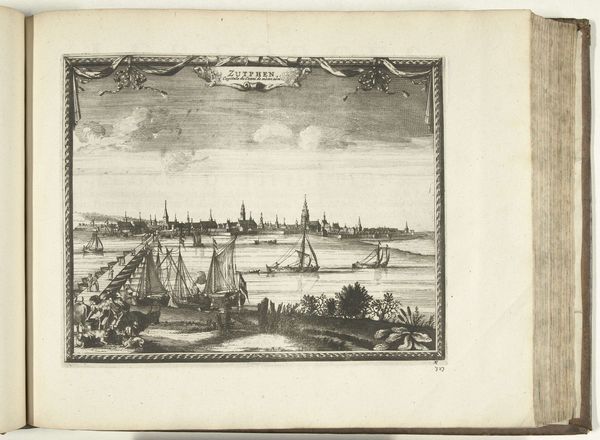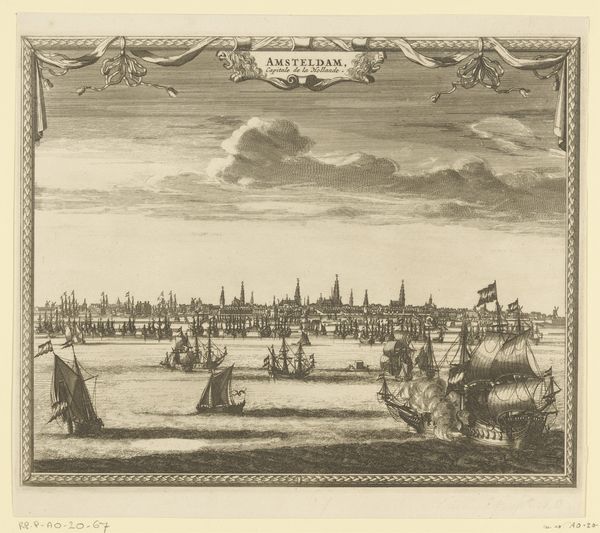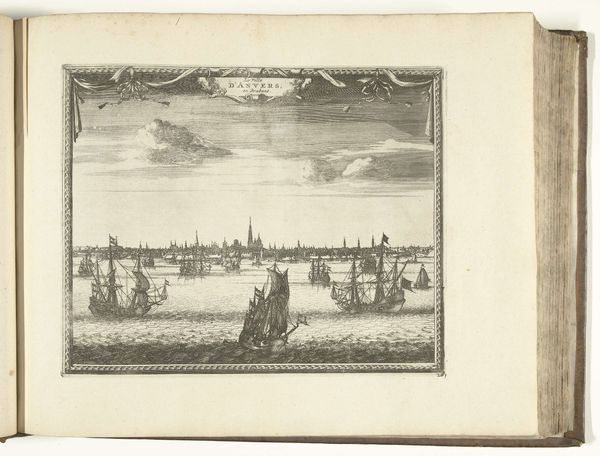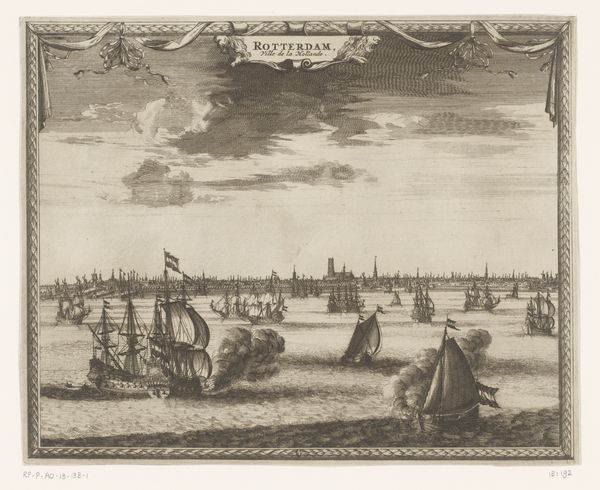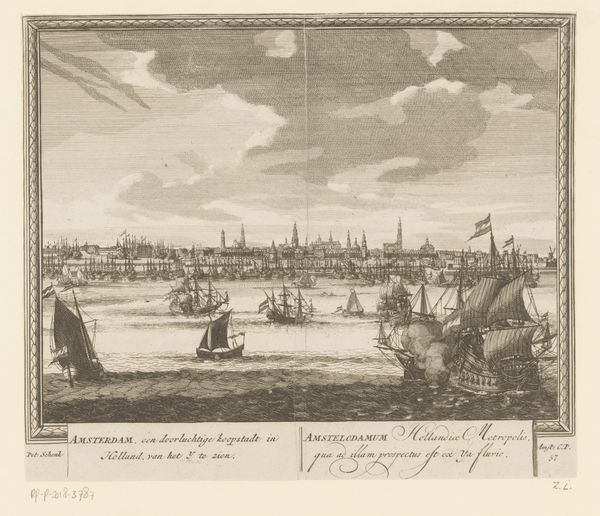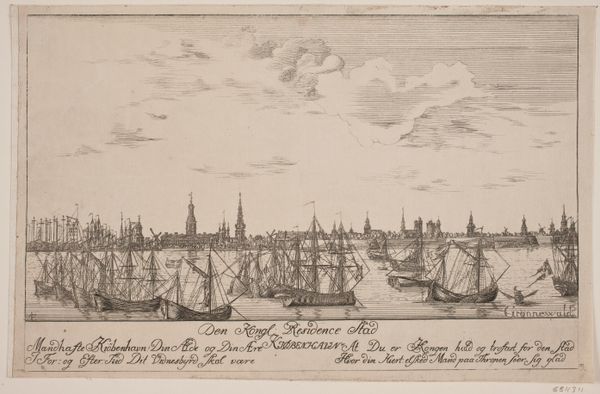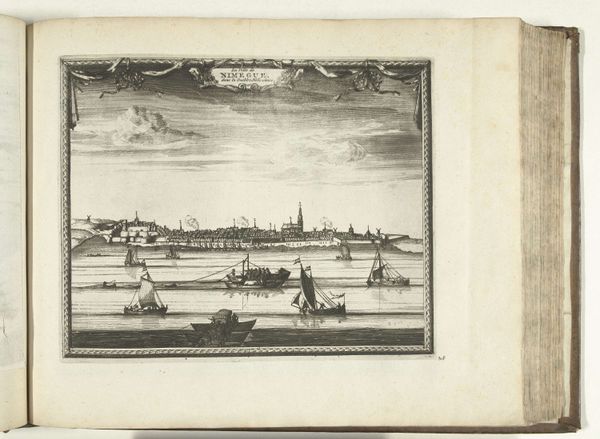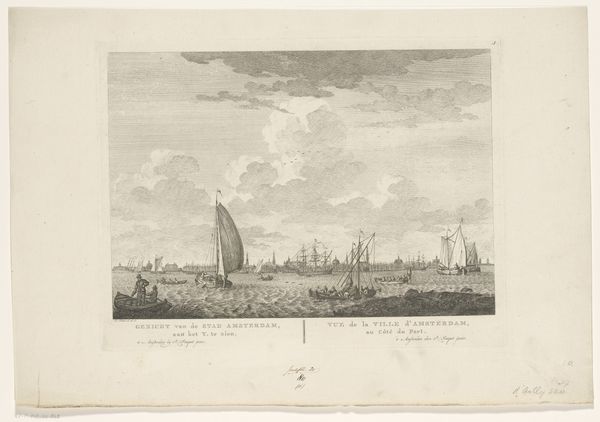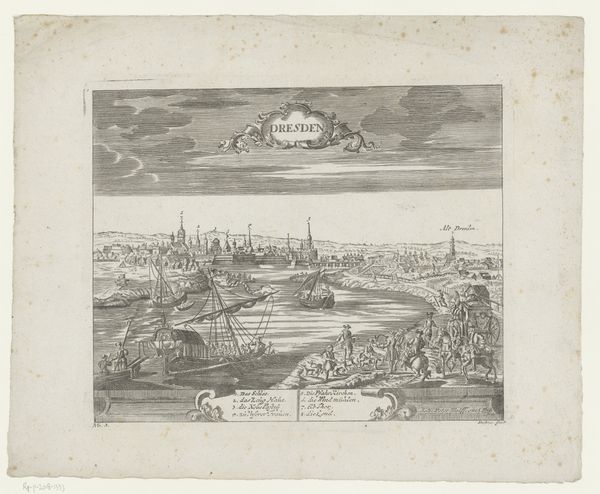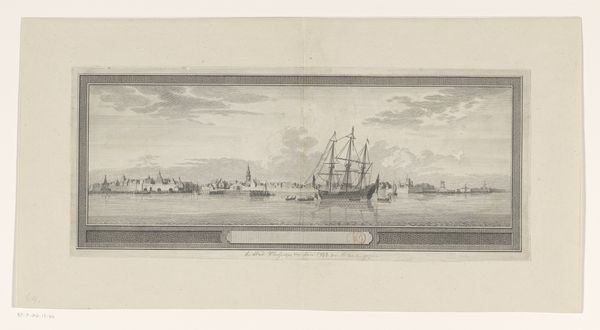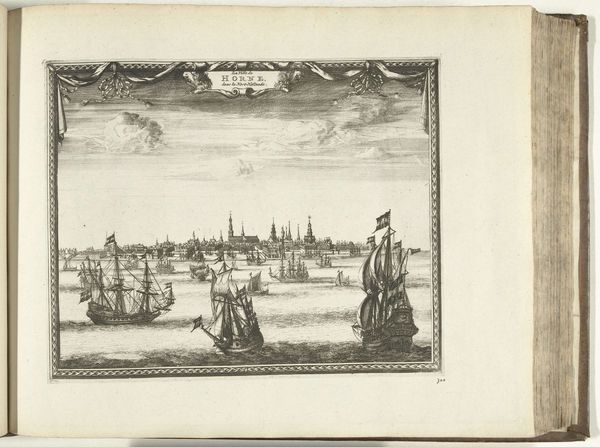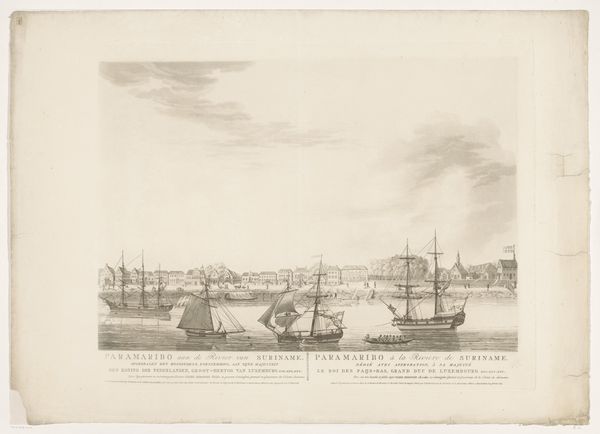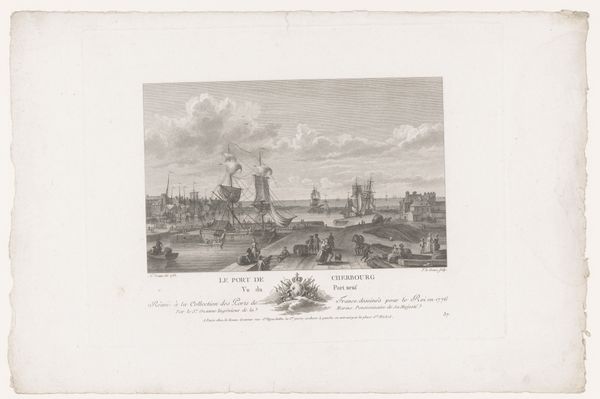
print, etching
#
dutch-golden-age
# print
#
etching
#
landscape
#
etching
#
cityscape
Dimensions: height 243 mm, width 460 mm
Copyright: Rijks Museum: Open Domain
Curator: Take a moment to observe this striking print, “Gezicht op Amsterdam,” or “View of Amsterdam,” created around 1663 or 1664 by Jacob van Meurs. It's an etching that captures the essence of Amsterdam during the Dutch Golden Age, housed right here at the Rijksmuseum. Editor: My initial reaction is that it feels both expansive and incredibly detailed. The sheer number of ships and structures crammed into this single view is mesmerizing. It speaks to a bustling, industrious society, wouldn’t you say? Curator: Absolutely. Prints like this served an important public function. The Dutch Golden Age was, of course, driven by trade, and images such as this actively cultivated the symbolic importance of Amsterdam as the centre of global commerce. Editor: Speaking of commerce, you can almost feel the energy of the labor involved. The meticulous lines of the etching process – I imagine the craftsmanship took a huge amount of skill and dedication, and there must have been huge demand for prints like this. Curator: Indeed, this image showcases a panorama but, in a way, it also markets the city to potential merchants, investors, and migrants. What better way to showcase the stability and power of a polity than to document a complete image of the built environment? Editor: Right, and that begs the question – how ‘complete’ is it? While it provides a bird's-eye view, which might suggest objectivity, there's a deliberate framing happening here. Which areas of the city get prominence, which are elided or simply absent? Curator: That’s precisely the role of the historian - to consider the narrative being woven and by whom, noting particularly who is left out. I think what we see, overwhelmingly, is an image to promote pride and project an image of power and economic vibrancy to the world. Editor: So, not just a visual document, but a form of propagandizing. Well, looking closely at the means of production—the lines, the technique—it encourages one to consider who and what it represented, and who labored for its circulation. It’s incredible to observe. Curator: Agreed, looking at the etching process itself offers a perspective that is so illuminating. Thank you for sharing.
Comments
No comments
Be the first to comment and join the conversation on the ultimate creative platform.
